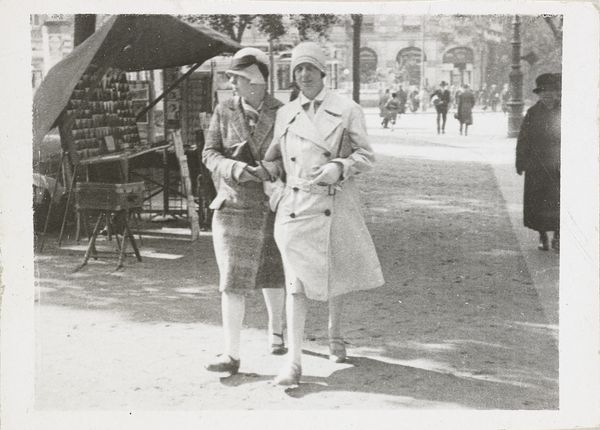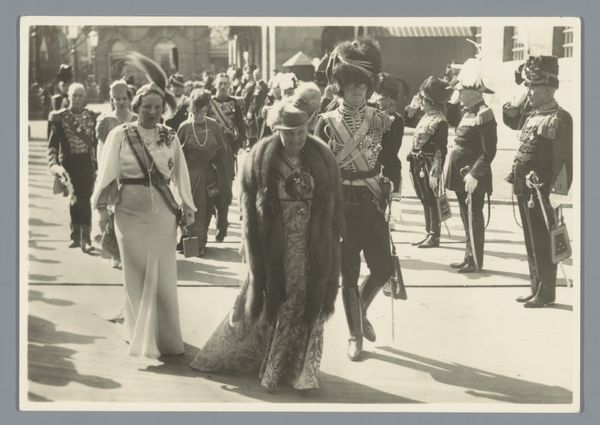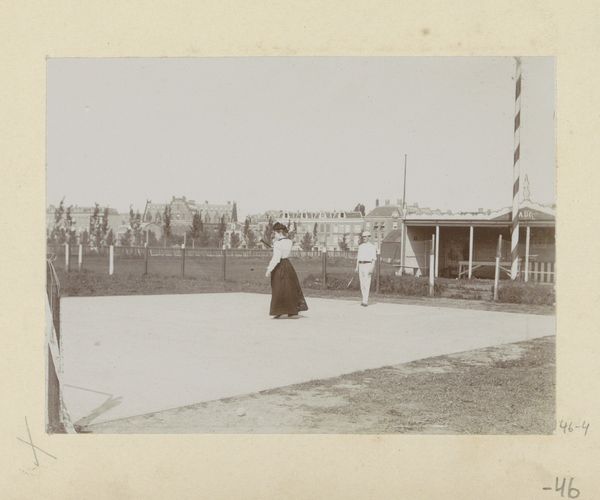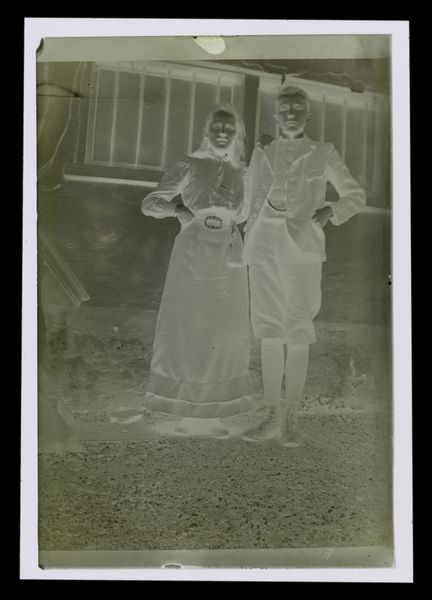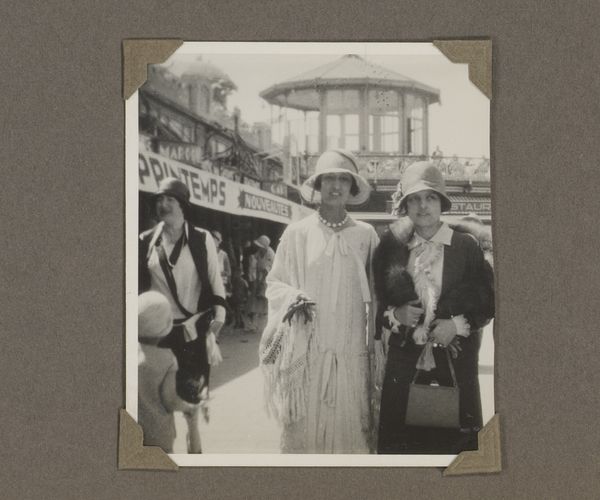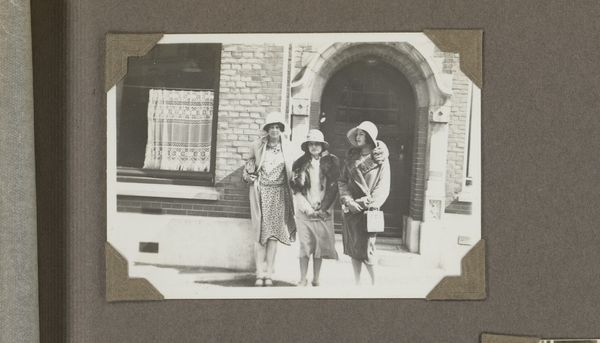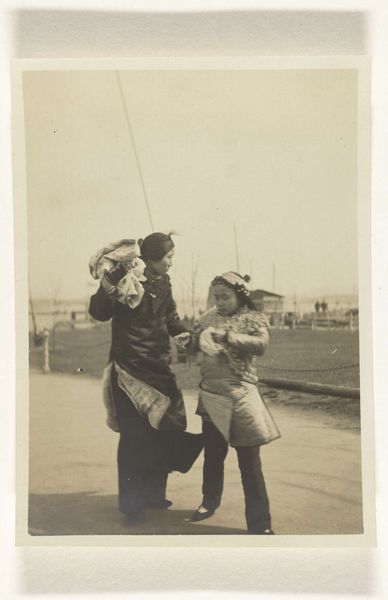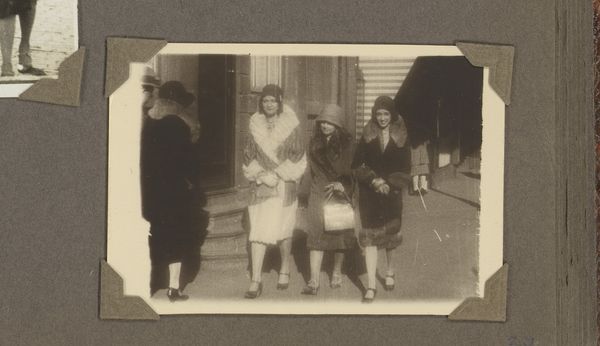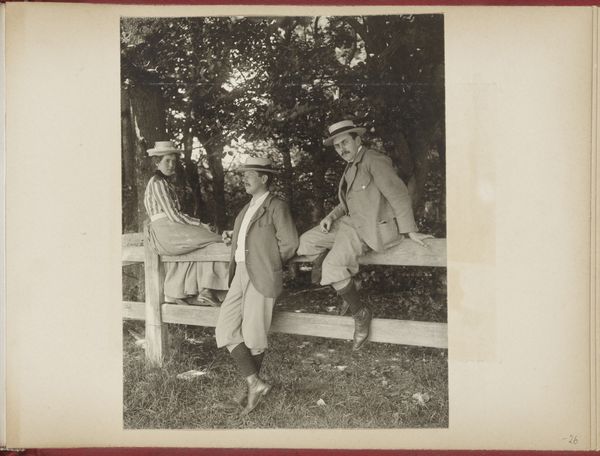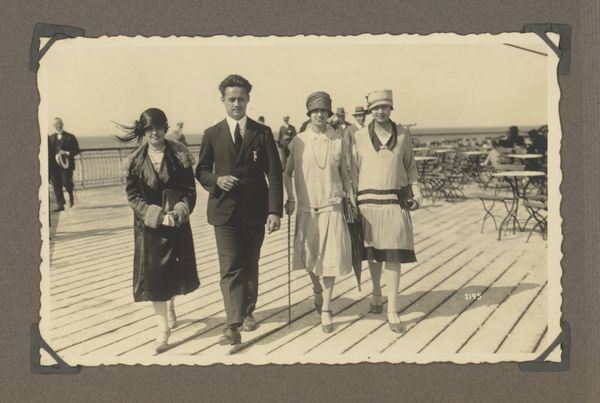
Portret van Henriëtte Wassink en Dootje van Zijll de Jong lopend over boulevard in Scheveningen 1930 - 1935
0:00
0:00
photography
#
portrait
#
limitedcolor palette
#
aged paper
#
pale palette
#
reduced colour palette
#
pastel soft colours
#
light coloured
#
feminine colour palette
#
street-photography
#
photography
#
personal sketchbook
#
historical fashion
#
cityscape
#
genre-painting
#
soft colour palette
Dimensions: height 88 mm, width 139 mm
Copyright: Rijks Museum: Open Domain
Editor: So, this is "Portret van Henriëtte Wassink en Dootje van Zijll de Jong lopend over boulevard in Scheveningen," a photograph by Hans Sutor, taken sometime between 1930 and 1935. It captures two women strolling along a boardwalk. There’s a really gentle, almost dreamlike quality to the light and the limited palette of the image. What do you see in this piece? Curator: The most immediate visual cue is, of course, the fashion, which situates us firmly in that interwar period, evoking all the social shifts around gender roles that came with it. But I'm particularly drawn to how the photographer frames these women not just as individuals, but as participants in a larger social ritual, captured along a promenade bustling with figures. It speaks to the democratisation of leisure, yet they seem somewhat reserved in their self-presentation, slightly separate from that movement of people around them. Notice how light and shadow almost carve them out as if they're on a stage, slightly removed from their surrounding cast. Editor: That's fascinating - the promenade almost becoming a stage! The framing certainly adds to the photo's appeal. It's almost as if their style conveys a message. Is that what you mean by the visual language expressing cultural shifts? Curator: Precisely. Clothing here operates as a form of symbolic articulation. Think of their hats, coats, and the confident way they occupy public space. In earlier eras, this kind of public visibility might have been more restricted, carrying different connotations. So how do you interpret what they hold? Bags? Flowers? Perhaps evidence of consumerism and socialising? Editor: Now that you point that out, the objects do become very significant. Considering this photograph's role as a historical document helps you view it with deeper cultural insight, noticing how much context impacts interpretation. Curator: And that continuous loop – between context and image – creates powerful resonance across time. I will always appreciate historical art.
Comments
No comments
Be the first to comment and join the conversation on the ultimate creative platform.


